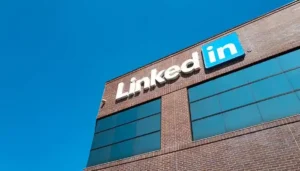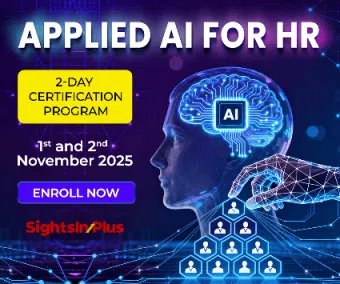LinkedIn has reported a dramatic 45% surge with AI in job applications over the past year, with the platform now processing 11,000 applications per minute.
This spike is largely attributed to the widespread adoption of AI tools such as ChatGPT, resume bots, and automated job application agents, which have reshaped how candidates engage with the hiring process.
Job seekers are increasingly using generative artificial intelligence to craft tailored resumes, automate job searches, and even simulate interview responses.
While these tools offer speed and efficiency, they’ve also triggered a wave of challenges for recruiters and hiring platforms.
The Rise of “Applicant Tsunami” and AI vs AI Dynamics
Recruiters have described the influx of applications as an “applicant tsunami”, with many struggling to manage the sheer volume of submissions.
In response, companies have deployed their own artificial intelligence systems—resume screeners, interview bots, and ranking algorithms—to sift through candidates efficiently.
At companies like Chipotle, an AI chatbot named Ava Cado has reportedly reduced hiring time by 75%.
Platforms such as HireVue now use artificial intelligence to evaluate video interviews, administer skill-based games, and simulate virtual tryouts to assess emotional intelligence.
However, this has led to a new phenomenon: AI vs AI, where job seekers use bots to outsmart employer screening tools, creating a feedback loop of automation on both sides.
Concerns Over Authenticity and Fraudulent Applications
The surge in AI usage has also raised concerns about fake applicants. In one high-profile case, North Korean nationals used AI-generated identities to secure remote IT jobs in the U.S..
Gartner analyst Emi Chiba predicts that by 2028, one in four job applicants could be fake, prompting calls for stronger identity verification technologies.
LinkedIn itself has introduced countermeasures, including AI tools that write follow-up messages, screen candidates, and highlight top matches.
A new premium feature shows users how well their profile aligns with job listings, reportedly reducing bad-fit applications by 10%.
Ethical and Regulatory Challenges
The rapid integration of AI into hiring has sparked ethical and legal debates.
The European Union’s AI Act has classified hiring tools as “high-risk”, subjecting them to strict regulations.
In contrast, the United States lacks a federal law governing artificial intelligence in recruitment, though existing anti-discrimination laws still apply.
Recruiters have voiced concerns about algorithmic bias, with some artificial intelligence tools reportedly favoring certain demographics over others.
Career experts warn that while AI can streamline hiring, it may also obscure genuine talent and perpetuate inequities if not carefully managed.
The Future of Hiring with AI: Efficiency vs Authenticity
Despite the chaos, experts believe the job search process will eventually stabilize.
Career coach Jeremy Schifeling notes that many job seekers are using artificial intelligence simply to keep pace with automated hiring systems, but warns that this reactive approach may lead to wasted time and resources.
As AI continues to evolve, both employers and candidates will need to strike a balance between efficiency and authenticity.
The hiring process may shift toward more human-centric methods—such as portfolio reviews or live problem-solving sessions—that artificial intelligence cannot easily replicate.
Note: We are also on WhatsApp, LinkedIn, Google News, and YouTube, to get the latest news updates. Subscribe to our Channels. WhatsApp– Click Here, Google News– Click Here, YouTube – Click Here, and LinkedIn– Click Here.



